How Special Needs Camps Adapted to a Pandemic
Two years of pandemic transformed everyday normal moments in life into the annoyingly and sometimes comically difficult. We often complained. We grumbled. We worried how we would do things. Then somehow we just got on with it.
Life can be like that every day for kids with physical or cognitive disabilities. Yet, they must learn at an early age just how to get on with it as well. These lessons in adaptation, grace and dignity can become much more complicated in a pandemic. And teaching kids with special needs during a pandemic has held its own lessons in adaptation for the teachers.
“That changes a lot of what we do compared to other camps,” psychologist Jodie Knott, director of Quest Therapeutic Camps of Southern California based in Orange County — which specializes in day camps and afterschool programs for kids with ADHD, autism, Asperger’s and depression — says about the challenges normally found in providing services to kids with special needs. “There’s a million things. How we speak to our kids. How we treat them in the moment.”
Meredith Cagle, director of strategy and innovation for Beyond Blindness — a nonprofit that offers a camp that pairs visually impaired kids with sighted buddies in a variety of typical social activities — says it’s surprising how many obstacles still exist in 2022 despite the American with Disabilities Act. “In general, planning camp we realize how much of the general public is not prepared or able to accommodate the needs of individuals with disabilities.”
Sometimes, you just need the people who will lead the kids.
“The biggest challenge is having enough staff for the number of children and families wanting the service,” says Lee Lombardo, associate executive director at YMCA of Orange County’s Community Services. “As most businesses have experienced in the past couple of years, the hiring shortage has had an impact on the lives of the children and families waiting for services.”
So, when the pandemic arrived in spring of 2020, it sent camps into a quandary as to how to handle this latest challenge.
“The first thing that went through the minds of the program staff was how are the children going to get served and be physically safe,” says Lombardo. “Families were at home because their businesses shut down. Staff were worried about their jobs and their own health.”
Cagle says decisions had to be made quickly. “When the lockdown first happened, we chose to cancel it for health and safety reasons, and we were unable to support camp activities due to multiple industry lockdowns. This was very difficult for us and we tried to find new ways to still provide programming for our community through family events.”
For many of the camps in 2020, their hands were tied. But not for long.
The J.F. Shea Therapeutic Riding Center in San Juan Capistrano canceled all six of their summer camps as well. But the equestrian-based week-long camp bounced back in 2021, deciding to reopen the camps with little change because it was entirely outdoors. All six programs sold out within two weeks. Tickets are nearly sold out for this summer.
Therasurf, a surf camp for kids with physical and neurological disabilities, moved to private and small-group camps. Segerstrom Center for the Arts programs moved online. No easy task. Others moved online as well.
“We pivoted that summer to an all-online program. It went well but it was a lot of work,” Knott says, with their main question “how do we keep the core and teach those skills but do that through a different medium?”
Quest Therapeutic Camps’ head staff worked plans to keep their options open. “For a while we were hanging on to see what was going to happen,” Knott says. “We were problem-solving right up to when the program started.”
Lombardo says the YMCA was able to use its size and relative resources to keep its Inclusion Program going. “Leadership pivoted to providing services at a smaller number of locations. In addition, we opened ‘pop-up’ sites to provide all day care for children of first responders, which did include some children with special needs. We also came up with safety protocols aligned with federal, state and county guidelines. There was — and continues to be — a team of staff whose jobs are to stay up-to-date on these protocols for all the locations.
An element that Lombardo says has been “invaluable to continue to offer services that are as COVID-safe as possible. Although we were unable to provide as many children with Inclusion services, we were able to provide the services for those children whose aides were available and whose families were willing and able to allow their children to be served by the Inclusion Program.”
As vaccinations became available and camps reopened in person (albeit smaller in size) in 2021, there was still a delicate balance the camps had to maintain.
“When we brought back our camp, we found the most difficult part was ensuring the health and safety of our campers and staff, and to ensure that parents felt comfortable with their children in a group setting,” Cagle says. “We also had to work harder to create activities and identify field trips that would provide the safest environment for our campers. We chose to have fewer participants, created smaller camp groups, increased sanitation procedures, and other strategies to reduce the risk of COVID spreading among campers.”
Knott says her Quest Camps — based on skill-building, impulse-control and following directions for the kids — moved the camps fully outdoor and the program was changed to create visual distance that made it easier for the kids to follow.
Chloe Saalsaa, manager of Studio D: Arts School for All Abilities at Segerstrom Center says, “It was the first time our students and teachers were in the dance studio together since the start of the pandemic. That alone was a great experience. It was a shorter session with just three weeks of classes, however, it was a very successful ease back to our new normal.”
All staff, students and volunteers were required to wear face masks during every class, answer a health-screening questionnaire and have their temperature taken upon arrival, Saalsaa says. “We also added 30 minutes between every class to allow for proper air flow in the studio and extra cleaning time to disinfect all touched surfaces.
“People living with a disability may have complex medical needs and be more vulnerable to illness. Therefore, families had to make difficult decisions about sending their children to a program with groups of children based on the risk. The families and children who attended were willing to follow the safety protocols. Others made the choice to keep their children at home. Fear for the families about their child getting sick affected attendance and the hiring of new aides.”
While the adults worked to get everything right, the kids mostly went with the flow.
“I think our kids did incredibly well,” Knott says. She says the way the staff was able to integrate safety protocols, the kids adapted easily. “Now they’re more flexible than myself or some of the parents. There’s definitely a learning curve, but they did really well.”
Lombardo shrugs off the small adjustments. “Some of our children, due to sensory issues, kept taking their masks off. But staff were diligent in teaching them the importance of wearing their masks — if it did not cause behavioral disruption and they could tolerate it — so that it became second nature, and they learned how to live with COVID not just in and after school, but in other parts of their lives.
“At the beginning of COVID, the facilities didn’t want the children on the outdoor play equipment, so staff were flexible with coming up with group games where distance could be maintained and children could still socialize,” Lombardo says. “An example would be each child had a box drawn on the floor and they would all stay in their box but hula-hoop together or jump rope together. Site staff and Inclusion staff worked together to be creative and have fun for everyone. The children could see positive possibilities in the face of hardship.”
Sometimes, the problems stemmed from the best intentions.
“It was hard for some students to keep their distance from one another, especially our younger ones who are eager to give their teachers and classmates hugs,” Saalsaa says. All of Studio D’s teachers and volunteers are fully vaccinated and they require students to show proof of vaccination or a medical/religious exemption. The center said it is continuing with health screenings when students arrive for class and keeping cleaning protocols in place.
“Our teachers also noticed the added challenge of instructing while wearing masks. They wore clear masks for our deaf or hard-of-hearing students and incorporated more visual supports so they weren’t just relying on verbal cues,” Saalsaa says. “Overall, the classes were successful in terms of student engagement and participation — providing a space for the students to be creative, socialize with their peers face-to-face, and simply have fun, made all of the challenges seem minor.”
Ultimately, there was a learning process for everyone.
“We learned to take things a bit slower and to be more patient with the process,” Saalsaa says. “The teachers navigated varied comfort levels and many emotions with the students so they had to be mindful about how they led their classes. This year we will continue to conduct classes with student and staff wellness in mind, and have fun while doing so.”
Lombardo says the YMCA being mission-based helped the Inclusion Program survive.
“Leadership truly believes in serving those in need, so there was commitment to keeping this program open and finding ways to adapt was always there,” Lombardo says. “The same team continues to be operating this program to this day. Hours of work changed, then changed again. Tasks changed and changed again. Everyone leading the program had to be flexible and give of their time in ways that were not originally what they were hired for — disinfecting toys, bathrooms, and tables and chairs was not in everyone’s job descriptions. The commitment to the program, and the leadership of the YMCA of Orange County really helped make this work.
“The entire YMCA of Orange County staff who returned to work also had to take specific COVID training to return to work. Every program here continues to adapt to COVID in ways we currently are able to understand it. The administrative staff collaborate and support one another’s programs to benefit the members each program serves. So much so that it seems we are back on track, but are more able to adjust as needed.”
Knott likes seeing how all the camps have been able to adapt and figure out how to succeed despite the obstacles of the pandemic.
“What we saw a lot of last year was that some of the kids had not returned to in-person school and they were so excited to see each other,” she says. “Our staff is always working with them on when to be silly and when to be serious, and we saw so much growth in our kids. A lot of our parents told us their kids had a really good transition because we spent so much time on how to set yourself up for success. That was a big win.”
Therasurf Director Kevin McCartney says, “Just having a day at the beach for the kids and family is therapy in itself. Some of the things our kids leave the beach with are confidence, friendship, feeling included and just being happy. As we all know, the ocean is very relaxing.”
Cagle is thrilled their hard work has led to new adventures.
“We kept mindful of what was most safe for our kids, meaning we would implement safety protocols and stay up-to-date with mandates and vaccinations. We also tried to keep everything outdoors and make sanitation a priority,” she says. And because of that, “we were able to coordinate with Makapo Aquatics to have a field trip where our campers would be able to participate in adaptable watersports.”
By Shawn Price

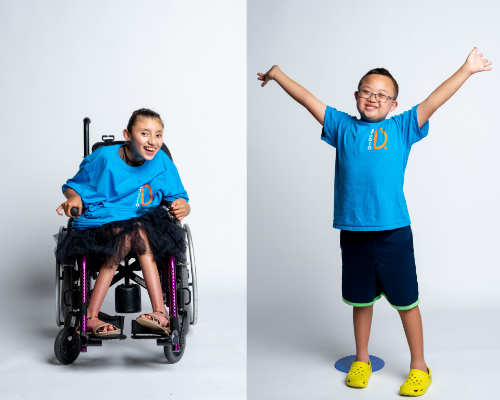
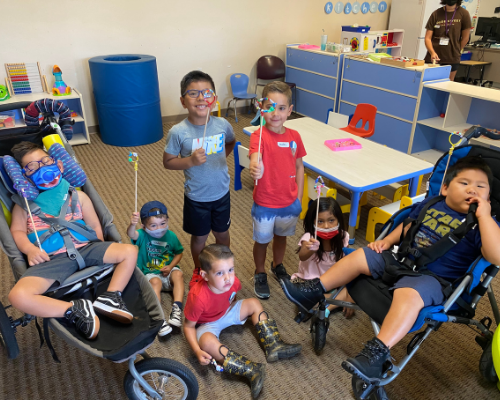
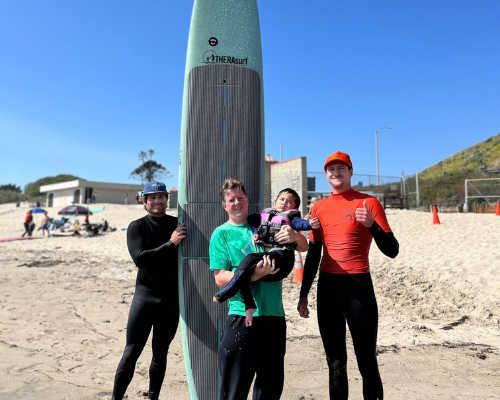


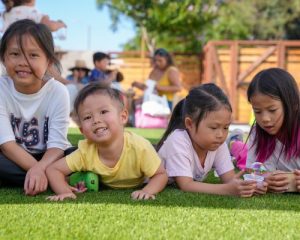


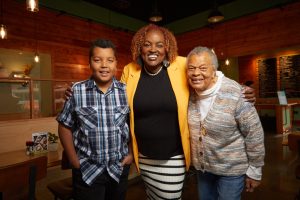



Leave a Reply